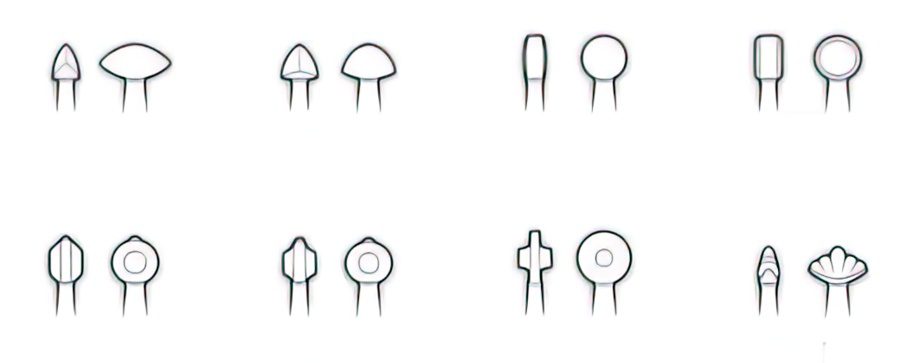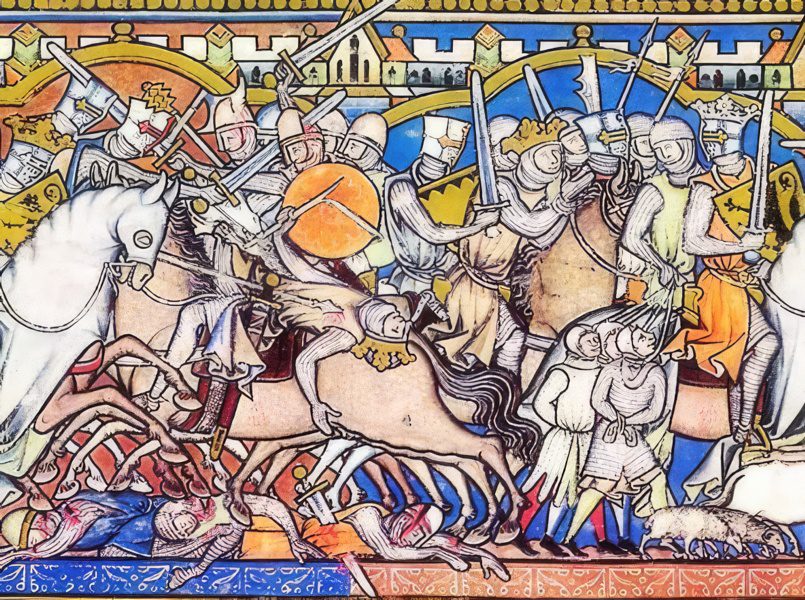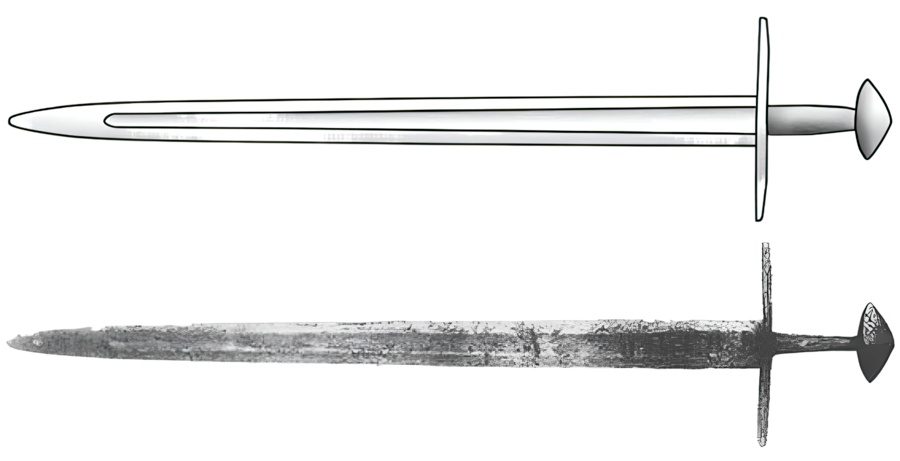Oakeshott Type X: The Evolved European Viking Sword

What’s in this article?
The Oakeshott type X swords are the first group in Oakeshott’s Typology. They are some of the most important and longest-used medieval blades and greatly influenced many others. These early swords were largely used by the Anglo-Saxons, Normans, and the Vikings as early as the 9th century, spanning through to the mid-13th.
Ronald Ewart Oakeshott was a sword enthusiast and profound researcher of European historical swords and armor with an experience of roughly 60 years. He created a double-edged sword classification chart known as the Oakeshott Typology, focusing on blades from the Viking Age to the Renaissance. His typology has 13 sword types in total, and Type X was the first and one of the most important.
In this article, we will explore everything there is to know about the Oakeshott type X. We will also include its different sub-types and then delve into their details and characteristics. We will discover how they were used in combat and touch upon their history and antiques preserved in museums or private collections.
Characteristics of Type X Swords

The type X swords draw many elements from Viking and Early Middle Ages swords. These swords can be seen in the charts and typologies introduced by Jan Peterson and Robert Eric Mortimer Wheeler in 1919 called The Norwegian Sword. This Viking sword system existed before Oakeshott’s Typology and was grouped by their hilt designs. The type X swords were fairly simple in design and were made to counter the period’s prominent chainmail armor and large shields.
Blade

The blades of the type X swords were very similar to those used during the Early Middle Ages, known as Viking or Carolingian swords. They feature a lenticular design throughout their entire thin and broad length. The distinctive characteristic of the type X blade is a wide fuller running from its center to its tip. However, some fullers can be narrower.
Type X blades featured an acute tip but were mostly rounded in design, making them primarily cutting types of weapons. The tang part under the handle is narrow and pointed, ending at the pommel. These blades are broad near the hilt and feature a slow taper towards the end.
Hilt (Guard and Pommel)

Type X swords feature a massive blade in great proportion to a very slim, small handle. These handles allowed the swords to be used as a one-handed weapon in conjunction with a shield. The early crossguard is present on this type of sword in the form of a longer cross much larger than the previous Viking style guards. These longer crosses were called gaddjhalt (spike hilt) by the Vikings and could feature inscriptions on them.
The pommel came in various shapes, some featuring the Viking style. The most popular is in the form of a Brazil nut, but many have disc-like shapes. Some later swords had a rounded pommel.
Size and Weight

Type X swords weren’t massive in size and regularly featured a blade 31 to 33 inches (79 to 84 cm) long with a handle length of 3.5 inches (9 cm), making them one-handed weapons with an overall length of 35 inches (89 cm).
While they weren’t short but not particularly long, it is believed that they were designed to be quite hefty to make them more efficient at cutting. Their weight could fluctuate, but generally, type X swords were around 3 lbs (1.3 kg).
Sub-type – Xa

Around 1980, Ewart Oakeshott added a new sub-type called Xa, previously linked with the XI. This change was due to the sword featuring a blade that didn’t share the XI’s slim blade profile. The Xa sub-type is almost identical in blade design to the primary X form but features a blade that is slightly longer and more narrowed toward its tip.
The Xa also features mainly the same guard, pommel types, and blade characteristics, with the exception of a fuller, which is narrow but has a distance in length toward the blade’s tip. It is believed that this narrower design made the Xa type a popular cavalry weapon.
Uses for Type X Swords

While not overbearing in size, the transitional type X swords were made to be used effectively while running, on horseback, charging with a shield in the other hand, and holding a tight battle formation. Due to the rounded blade tip, type X swords were primarily cutting and slashing weapons that were most effective on foot or while mounted.
During the period the type X was primarily used, plate armor wasn’t yet developed, so these swords had more brute force that was effective on unarmored or lightly armored enemies. The heavier and broader blade design also worked well against wooden shields.
History and Historical Examples of Type X Swords

Type X swords were transitional European double-edged blades that linked the Viking or Carolingian sword and the European knightly or arming sword. The Viking sword was a more evolved form of the longer Roman Spatha. Type X swords were popular weapons of war used from the 8th through the 12th century.

Due to their cutting effectiveness, these swords were also some of the longest used, as reflected in the Oakeshott Typology. Their blade design remained the same throughout their usage, with only minimal changes to the tip and broad blade profile.

Type X swords are featured in many historical scripts, sagas, and medieval art. Some popular examples are the Maciejowski Bible from the 13th century and the Bayeux Tapestry. These swords were widely used throughout Europe, some of the most popular cultures being the Normans, Anglo-Saxons, Vikings, and Slavic tribes in the east. Some of the most popular type X blades were called Ulfberth Swords, thanks to the inscription of the word Ulfberth written on them.




